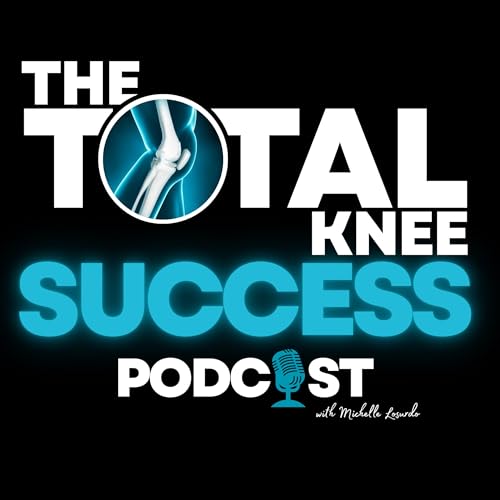
Episode 10: Top 5 Myths About Healing After Knee Replacement (Part 1): What the science really says about knee replacement myths
カートのアイテムが多すぎます
カートに追加できませんでした。
ウィッシュリストに追加できませんでした。
ほしい物リストの削除に失敗しました。
ポッドキャストのフォローに失敗しました
ポッドキャストのフォロー解除に失敗しました
-
ナレーター:
-
著者:
このコンテンツについて
In Episode 10 of the Total Knee Success Podcast, we break down the first five myths about healing after knee replacement. From the old “no pain, no gain” idea to concerns about range of motion, CPM machines, walking, and stairs, this episode explains what the research actually says. Listeners will learn why walking alone isn’t enough and why going downstairs is often harder than going up — so you can avoid the common myths that add worry to your healing. Learn more and access additional resources at TotalKneeSuccess.com.
Medical Disclaimer The Total Knee Success Podcast is for educational purposes only. It is not a substitute for professional medical advice, diagnosis, or treatment. Always seek the advice of your surgeon, physical therapist, or other qualified health provider with any questions you may have regarding your specific condition or care. Never disregard professional advice or delay seeking it because of something you heard on this podcast. This podcast is not affiliated with Michelle's clinic or teaching roles.
Amazon Affiliate Disclaimer As an Amazon Associate, I earn from qualifying purchases. This means that if you click on a product link in my show notes or at TotalKneeSuccess.com and make a purchase, I may receive a small commission at no extra cost to you. These commissions help support the podcast and allow me to keep creating free, evidence-based content. I only share products that are commonly recommended for knee replacement and that patients have found helpful.
References
- Jette DU, Hunter SJ, et al. Clinical practice guideline: Physical therapist management of total knee arthroplasty. Phys Ther. 2020;100(9):1603-1631.
- Baker PN, et al. Pain and function outcomes following primary TKA: registry data. J Bone Joint Surg Am. 2012;94(11):990-996.
- Rice DA, McNair PJ. Quadriceps arthrogenic muscle inhibition: mechanisms and treatment perspectives. Semin Arthritis Rheum. 2010;40(3):250-266.
- Issa K, et al. Does timing of manipulation under anesthesia affect ROM after primary TKA? J Knee Surg. 2014;27(3):195-199.
- Werner BC, et al. The incidence of manipulation under anesthesia after TKA. J Arthroplasty. 2015;30(12):1962-1965.
- Harvey LA, et al. Continuous passive motion following total knee arthroplasty. Cochrane Database Syst Rev. 2014;(2):CD004260.
- Minns Lowe CJ, et al. Effectiveness of physiotherapy exercise after knee replacement: systematic review. BMJ. 2007;335:812.
- Artz N, et al. Effectiveness of physiotherapy exercise following total knee replacement: systematic review & meta-analysis. BMC Musculoskelet Disord. 2015;16:15.
- Skoffer B, Dalgas U. Exercise as treatment in knee OA/TKA patients. Scand J Med Sci Sports. 2012;22(6):e119–e127.
- Villadsen A, et al. Intensive rehab after TKA improves function. Arthritis Care Res. 2014;66(12):1856–1866.
- Taylor WR, Duda GN, Bergmann G, et al. Peak knee contact forces during stair ascent and descent in vivo. J Orthop Res. 2012;30(3):408-415.
- Kutzner I, Heinlein B, Graichen F, et al. In vivo knee joint loading in ADLs. J Biomech. 2010;43(11):2164-2173.
- Andriacchi TP, et al. Analysis of stair ascent and descent motions. Clin Biomech. 2006;21(5):467-474.


